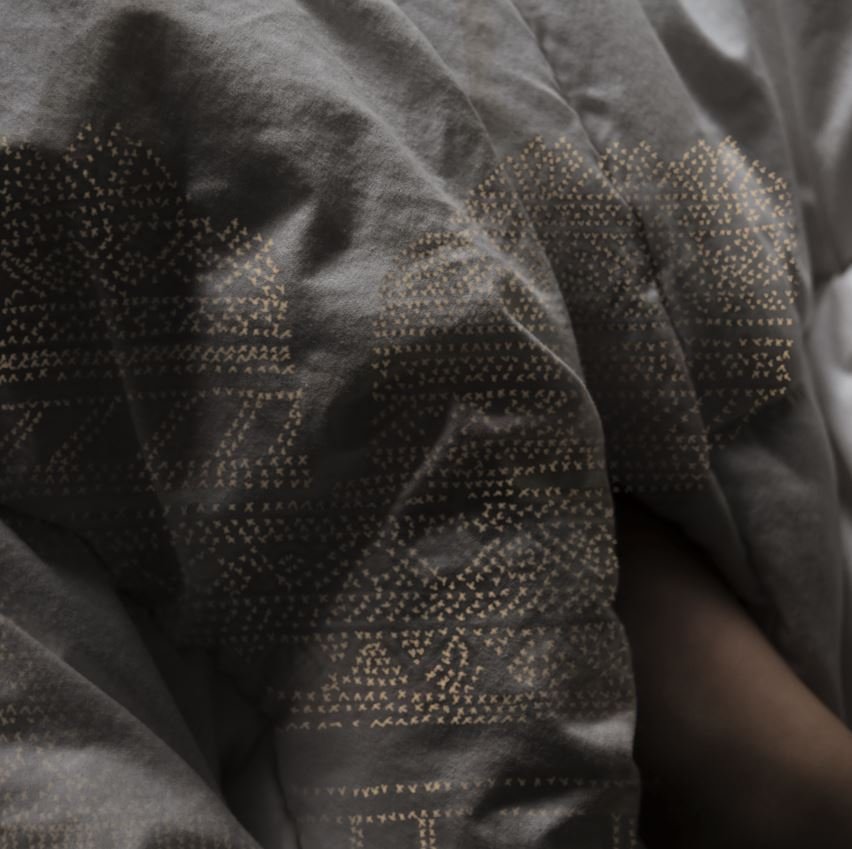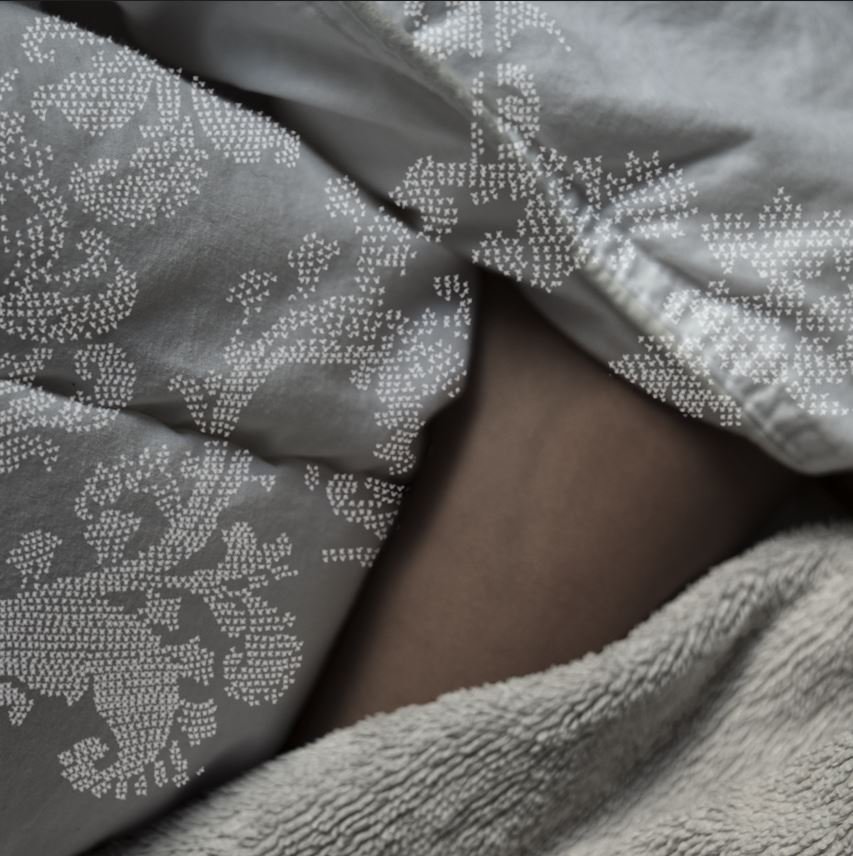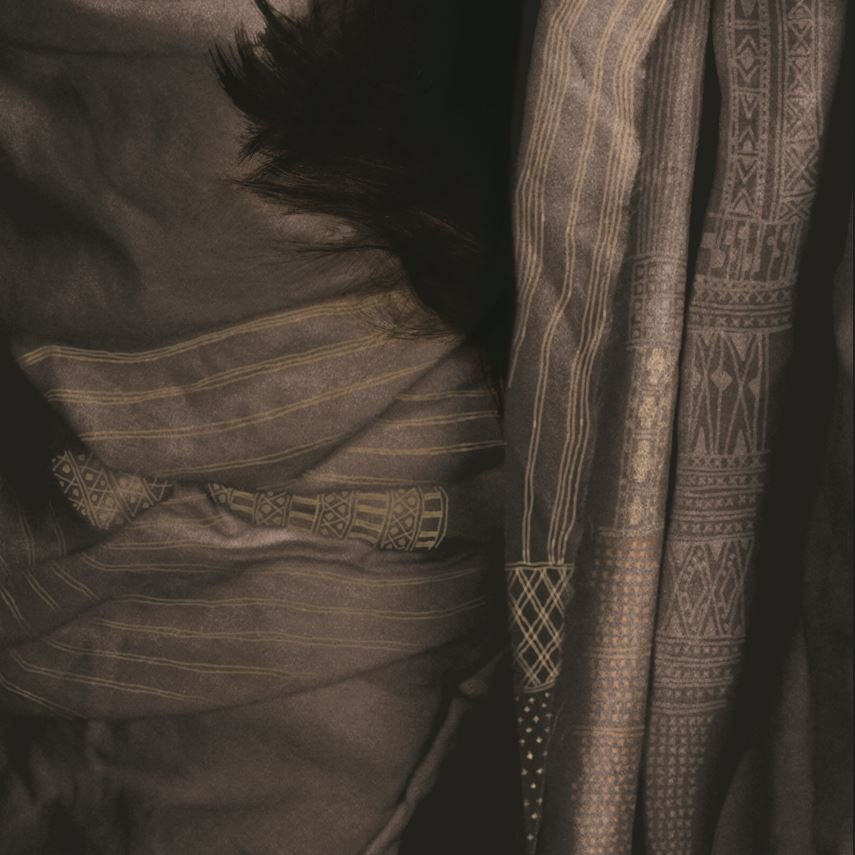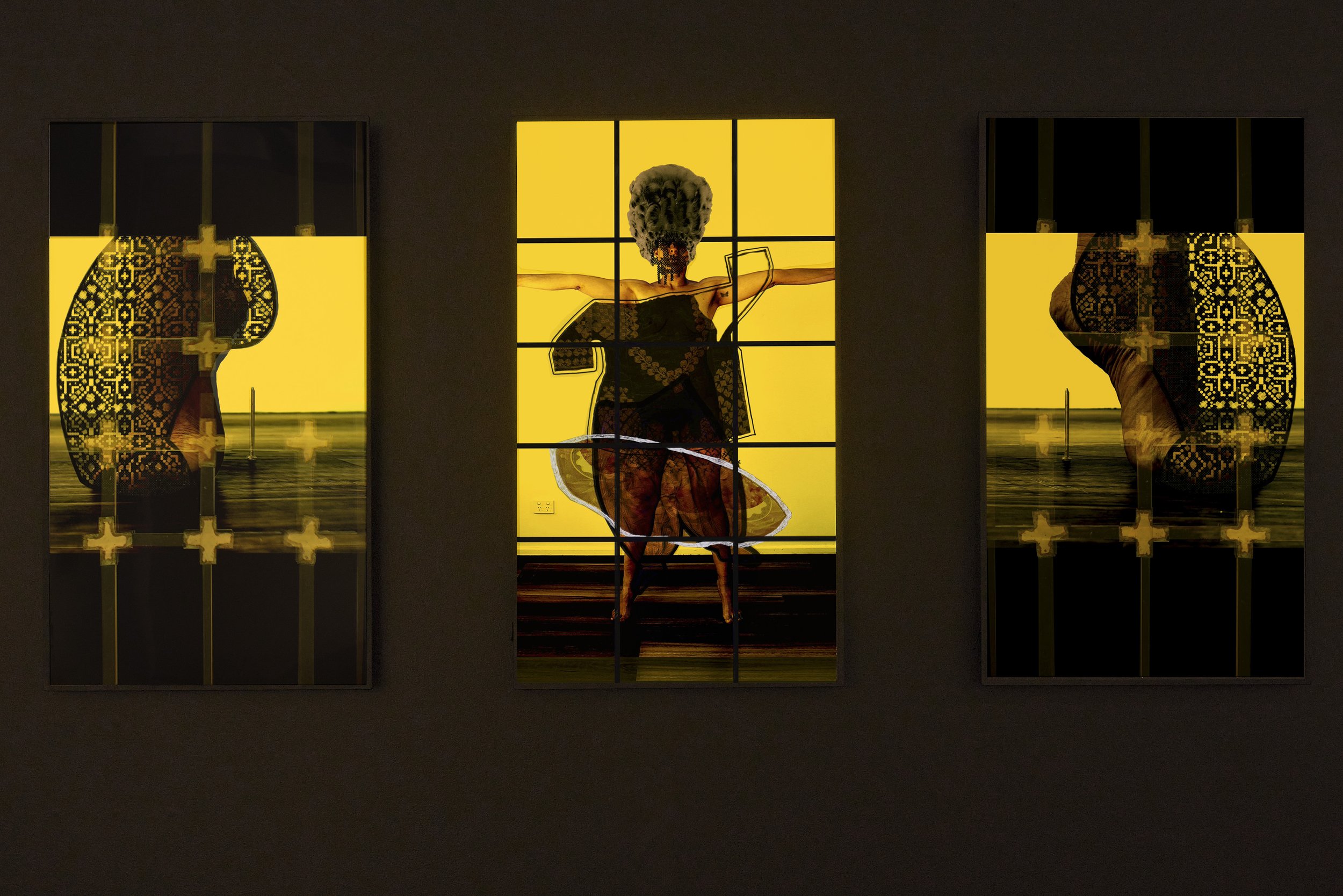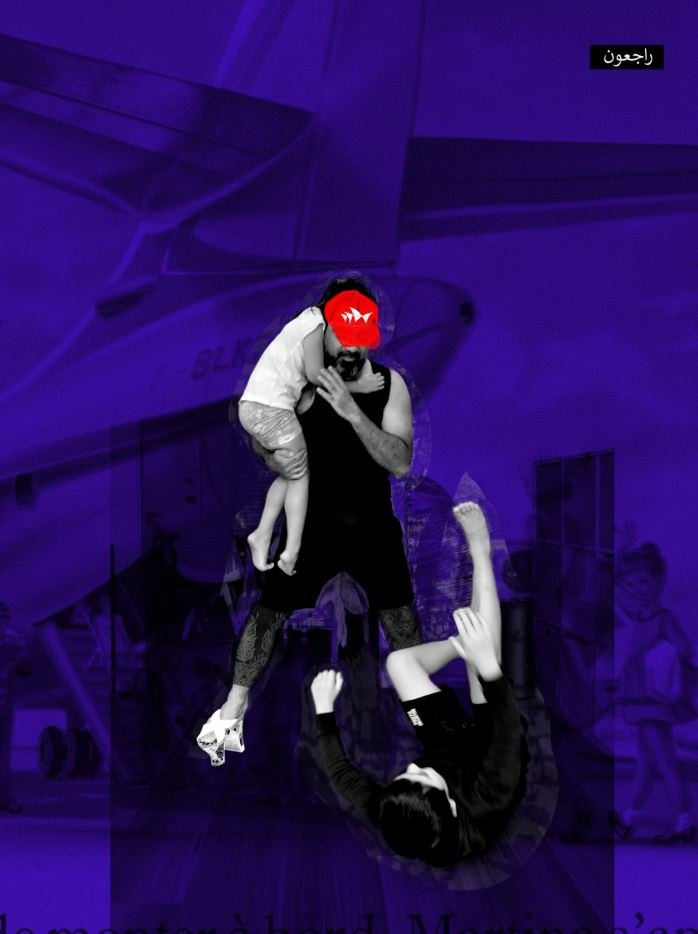THE UNBEARABLE RIGHT TO SEE AND BE SEEN (2023)
explores the relationship between self representative image making and the gaze - inviting an internal examination of the values we assign to the images we create and consume.
Using digital imaging and embroidery as medium and message Eddie’s new works render a convergence of notions of contemporary + ancestral, home land + host country, the curated + mundane, the digital + tactile.
References and raw material include the early photographic representation of Ottoman Greater Syria women by the French Bonfils studio, Vogue Arabia imagery, personal photographs and video filmed on Dharug Country and in Lebanon.
From the Mountains, to the River, to the Sea
5 Channel Video projection, duration of individual works variable, all videos played on loop (played simultaneously)
Filmed on Dharug Country and in Jbeil, Lebanon, this work is my acknowledgment of living and working on unceded lands. The sight and sound of eucalyptus trees swaying in the wind brings together my childhood in Lebanon and my life now on Dharug country where my children were born. Sitting alongside this symbolic convergence, is the uncomfortable truth that the eucalypt present today in Lebanon and Palestine is the offspring of the eucalypt collected during the 1800’s French expedition to Australia. It is considered an invasive species; its introduction and cultivation complicit in the dispossession of the indigenous people of Palestine and the disruption of the local ecologies.
Sold Out
Credit videography : Ludwig El Haddad
5 Channel Video, played on vertical TV screens, duration of works variable, played on loop (played simultaneously)
The starting premise for the works in this exhibition is the large body of photographs of women taken by French photographer Felix Bonfils in his Beirut studio in the 1860’s. I had come across this collection online a few years ago. These photos, sold as postcards in Europe, were among the first batches of photographic imagery that propagated orientalist narratives.
In the 1960’s in the Algerian village of Ain Terzine, the occupying French army, in its pursuit of creating war archives, forced women to unveil in order to shoot their photographic portraits. The women’s fury is seen in their eyes. In spite of the original colonisers’ intent, these photos captured an instance of defiance, seen in the women’s eyes - a reclamation some agency. I feel these photographs encapsulate a question I am constantly trying to resolve in my works - how as an image maker am I able to maintain agency while intentionally using my own body image for consumption?
In Her Finest
Digital prints on archival rag art paper
Artwork dimensions 1 triptych, each print h 140 cm x 100 cm
In my print work I often use ‘digital embroidery’ referencing cross stitch embroidery. The artform of cross stitch embroidery from the region of Greater Syria holds many meanings for me. My ongoing learning about this artistic practice has unveiled to me the intricate connection between the exploitation of women’s Labour and colonial/capitalist projects leading to disruption and displacement in the region. Most importantly, cross stitch embroidery embodies narrative transference - from one generation to the next. I see the ‘digital embroidery’ in my works as a personal contribution to this notion of continuity of culture.
At Her Finest #1 , At Her Finest #2 , At Her Finest #3 , At Her Finest #4
Credit Photography : Aram El Haddad
Digital print on archival rag art paper
Artwork dimensions 4 prints, each h 140 cm x w 100 cm
tiny price to pay#1, #2, #3, #4, #5, #6
Created with Yasmeen El Haddad
Digital print on archival rag art paper
Artwork dimensions h 17 cm x w 17 cm
I learned about the silk industry in Mount Lebanon as I was trying to understand the reasons behind the apparent disappearance of cross-stitch embroidery practice in current day Lebanon as opposed to its continuity in neighbouring Syria and Palestine. There could be a link between the erasure of this practice and the rise of the silk industry in Lebanon. The works titled ‘Tiny Price to Pay’, refer to a specific aspect of labour exploitation in the 1800’s Mount Lebanon silk industry. The French controlled industry benefited from the cheap labour of women and specifically young girls, whose tiny hands could delicately unravel the silk from the boiling silk cocoons. As I was making these works with my daughter Yasmeen, the devastating war on the Palestinian people started to unfold, the children continuing to bear the brunt of an ongoing violent colonial project.
Quite Resolved
Black thread on white calico fabric
Artwork dimensions 40 cm x 40 cm
This work is a part of an ongoing interest in converging the tactile and digital as they realte to teh context of my work. Representation, women’s labour and creativity, representation and images as powerful tools for politicised narratives.
Silk Cuts - body of work presented at Create NSW Visual Arts Fellowship exhibition - Awarded in 2022
The starting point for Silk Cuts was an astounding encounter at the National Museum in Beirut, where I sighted for the first time an example of Lebanese cross stitch embroidery. The preserved motifs in red and black still visible on the dresses of the 13th century Lebanese ‘Maronite Mummies’. In one moment the concealed threads that bind the present to the past started to reveal.
Silk Cuts proposes that the disappearance of Lebanese cross stitch embroidery, a women led practice, is linked to the emergence and fall of French induced silk and silk cocoon production in Mount Lebanon in the mid 1800’s and its profound effect on women’s lives.
The Lebanese silk industry, serviced predominantly by women, impacted society and soil; its collapse contributed to the World War I Mount Lebanon Great Famine and mass migration - the recently colonised Australia becoming one of the destinations.
Eddie Abd draws links between this defining epoch of modern Lebanese identity and her own self. Referencing embroidery motifs and garments from historical Greater Syria as well as creating her own motifs, she constructs self referential imagery while calling attention to the historic and ongoing problematics of Orientalist representation in mass visual media.
Silk Cuts, featuring Palestinian embroidery motif Mulberry of Damascus
https://vimeo.com/769726855/07f858464c
Now Look Away (2022)
https://vimeo.com/777994407/5efd4b0241
Now Look Away opens a dialogue around the tension between self-referential image making and the perpetuation of orientalist representations in contemporary visual culture. The work references European 19th century orientalist studio photography and the women led practice of cross stitch embroidery of the Ottoman Greater Syria region.
In Their Finest, Awarded Blake Prize (Emerging) , 2021
In Their Finest explores the conservation of tradition as negotiated by families experiencing instability and living on stolen land. It references long exposure Victorian death portraits and the traditional textiles of Greater Syria. As the video unfolds the notions of practicing tradition and social conformity are challenged by an unexpected turbulence within the Family.
Lebanon Landing
1 Channel video
Created with Ludwig El Haddad, Aram El Haddad and Yasmeen El Haddad
I came across, for the first time, a small chapter in Lebanese history. In the 1960's a group of young students and their teacher Manoug Manougian formed the Lebanese Rocket Society. With humble beginnings, the program grew and was successful in launching a rocket into ‘space’. The program, in line with other nostalgic national narratives, was short lived and remains in the ‘what could have been’ mindspace. However, I thought we could argue that Lebanon was and still is successful in sending its citizens ‘out to explore’.
Comeback (2022) print series
Prints on archival rag art paper
Dimensions 75 cm x 56 cm








